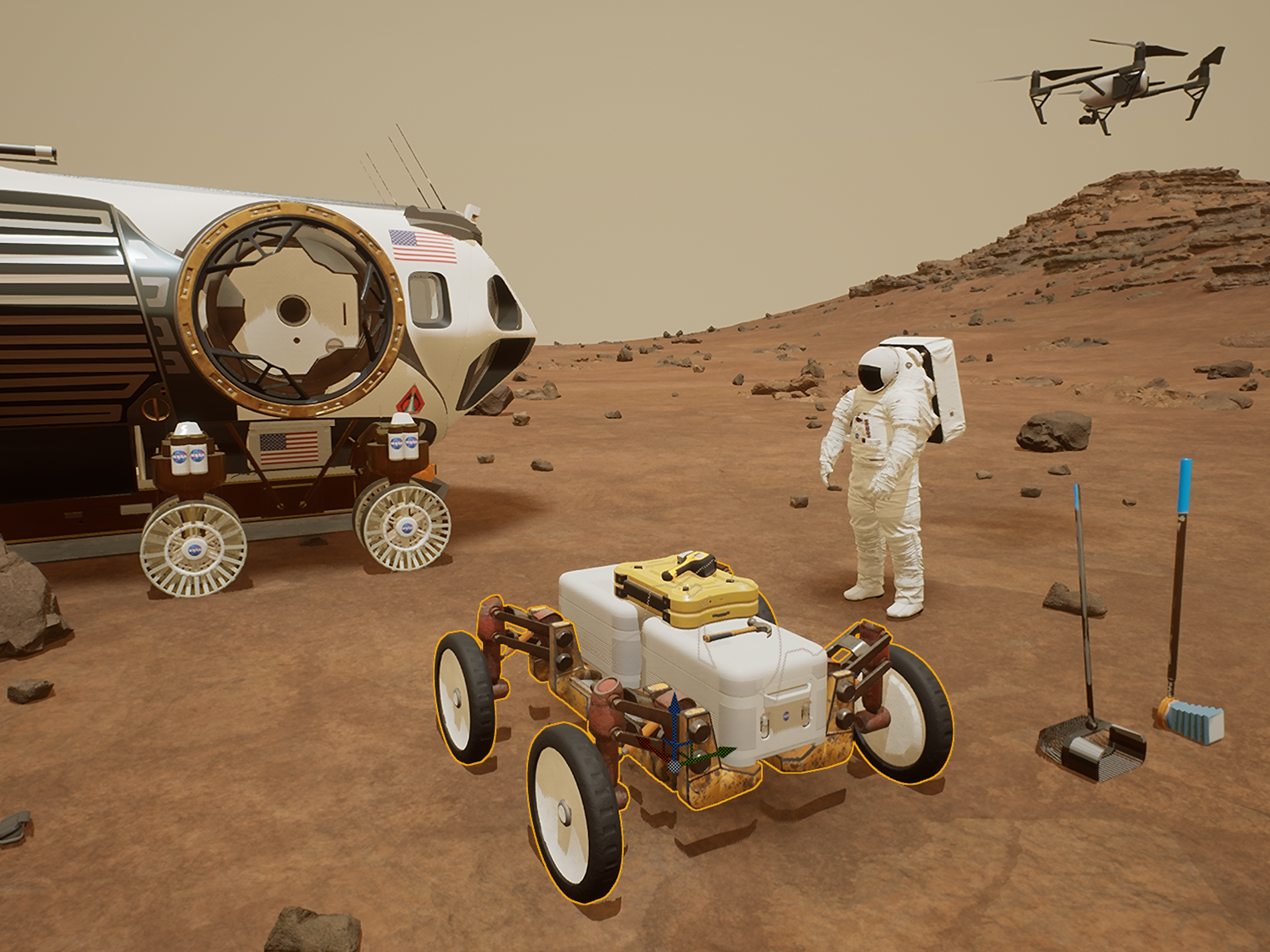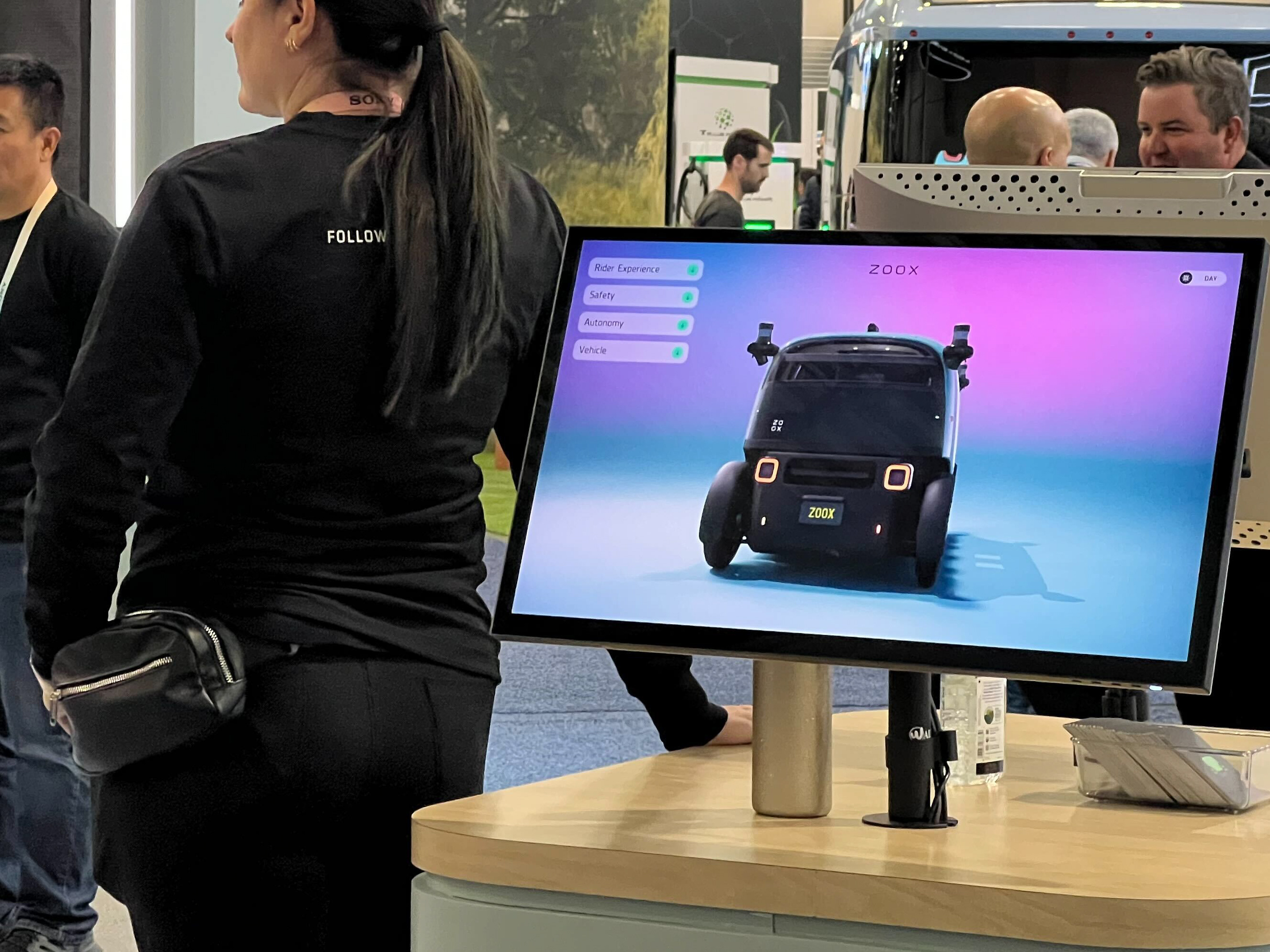While working at NASA, I supported the Center for Design and Space Architecture (CDSA)—a team responsible for solving design challenges in extreme environments. I contributed to a series of virtual reality (VR) simulations for Gateway, an orbiting lunar outpost central to NASA’s Artemis Mission.
I have omitted and obfuscated confidential information in this case study. All information in this case study is either my own or exists in the public domain.
Artist rendering of Gateway from NASA
Designing an orbiting vehicle that serves as a communication hub, science laboratory, and short-term habitat is an enormous endeavor. The International Space Station (ISS) orbits a mere 400km above Earth, whereas Gateway would sit hundreds of thousands of kilometers away. This ambitious goal underscores NASA’s drive to return humans to the Moon and eventually land them on Mars.
Infographic illustration of Artemis Mission from NASA
Built through collaboration among international and commercial partners—including the Japan Aerospace Exploration Agency, the European Space Agency, the Canadian Space Agency, Northrop Grumman, and SpaceX—Gateway will provide vital support for a sustained human presence on the lunar surface. During Phase A of the project’s life cycle, my team at the CDSA visualized the vehicle architecture and developed low-fidelity prototypes with a human-centered design mindset.
Example interior render of space architecture project from NASA
Team
Makoto Kumasaka - VR Designer
Brett Montoya - Space Architect
Bahar Partovi - Industrial Designer
Zachary Taylor - Space Architect
Taylor Phillips-Hungerford - Space Architect
Mark Cramer - VR Developer
Kevin Arango - Technical Artist / VR Developer
My core responsibilities involved contributing to high-level design decisions and translating them into VR simulations for human-in-the-loop testing (HITL). I acted as a liaison between the design and development teams—three industrial designers, two space architects, and two VR developers—ensuring VR tools were used effectively to validate habitat features. By leveraging VR, we accelerated the design process, complemented physical prototyping, and provided stakeholders with richer spatial feedback.
Artist depiction of the Gateway HALO module from NASA
Using VR as a prototyping tool allowed us to overcome the high cost and slow pace of physical mock-ups, which can take up to nine months and cost around $250,000 to build. Unlike traditional approaches using Rhinoceros3D or CREO, VR enabled first-person immersion—crucial for gauging habitat scale, volume, and ergonomics. This improved fidelity helped us explore realistic material finishes (e.g., composites, machined aluminum, and tempered glass) instead of settling for gatorboard or plywood mock-ups.
Example of a fully optimized VR environment from NASA's CDSA
Maintaining optimal performance in VR simulations was essential: a low framerate can cause disruptive lag and nausea for some users. I employed game-industry techniques (optimizing meshes, baking textures, instancing animations) and a pair of digital content creation tools (Blender3D, Substance Painter) to keep the simulation smooth and immersive. I also contributed to the development of microgravity simulations, ragdoll physics, and a custom Unreal Engine plugin to streamline project setup, all of which improved testing realism and efficiency. All of these features played essential roles in the HITL series - allowing subject matter experts to make more informed decisions on the design of Gateway.
An Unreal Engine plugin that expedites material asset creation - developed by the CDSA
The success of these VR simulations validated this emerging technology for space architecture design. Following a series of HITL tests for the HALO module, astronauts and subject matter experts commended the VR environment’s impact on evaluating habitable volumes. Moving forward, this VR-based approach will continue to inform high-fidelity physical prototypes and further shape NASA’s Gateway and Artemis missions—ultimately supporting humankind’s return to the Moon and eventual journey to Mars.
National Geographic crew films veteran astronaut, Jessica Meir, as she evaluates Gateway in our VR simulation
Impact
- Quick turn-around prototypes, reducing waiting period by 95%
- Maintained a runtime VR performance of 90fps in environments with over 100 million polygons
- Provided simulations and testing facilities to 12 astronauts and 100+ subject matter experts
- Informed decision-making on vehicle translation aides, outer-mold line, stowage configurations, etc.
- Contributed to NASA's first verification of a space station module in VR
- Saved up to $750,000 in material and labor costs
Photo of me testing the mobility of EMU gloves for driving a vehicle in VR



